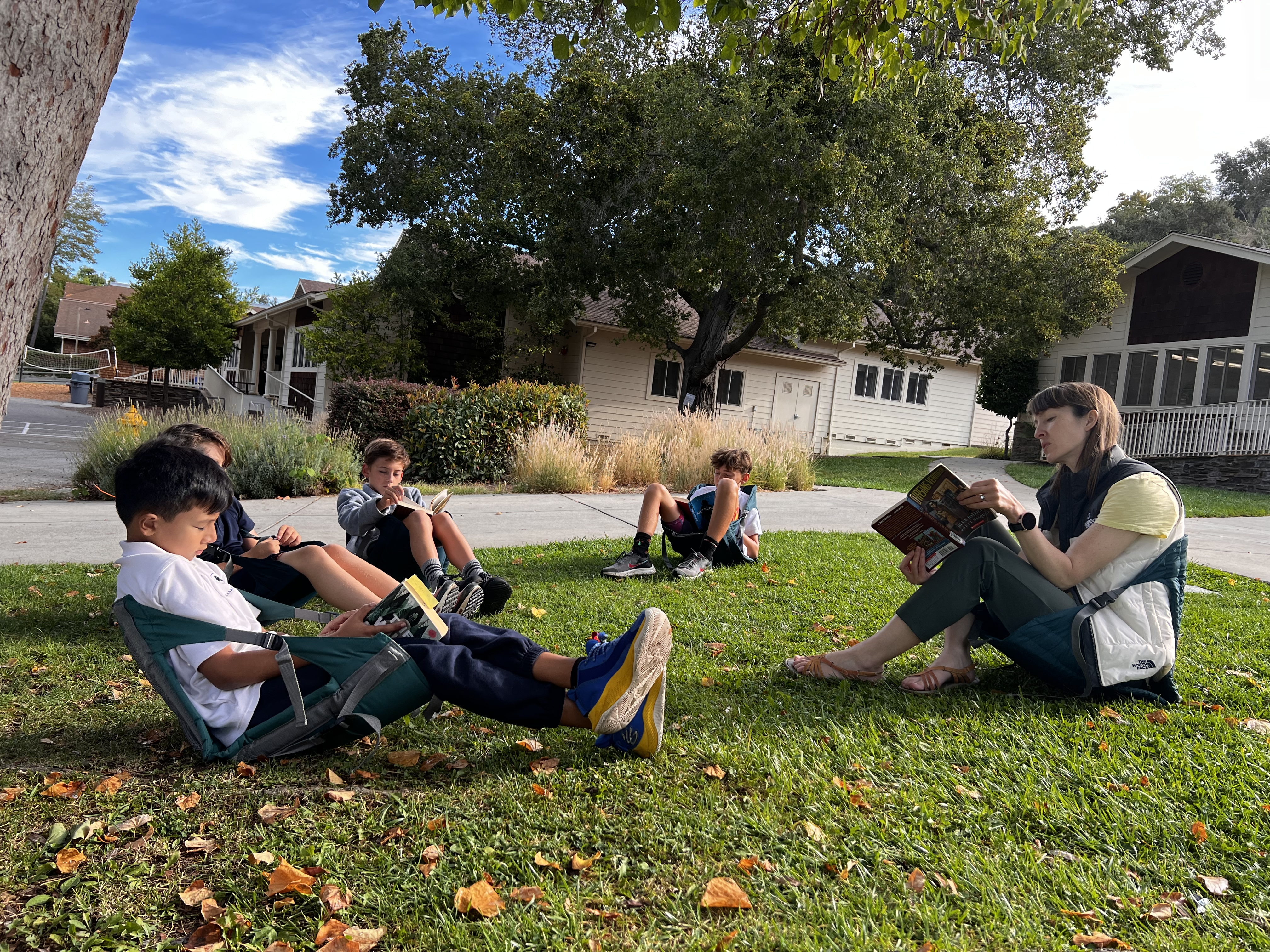“Wait! Maybe the illustrations are all the pentominoes, and each one with a frog in it also has a pentomino. Then they each stand for a letter and it becomes something you have to unscramble, like a word scramble.”
“I like mysteries. Usually, if you really pay attention then you can figure it out. But it’s not going to be what’s obvious.”
5th Grade readers in English have set their sights on a lofty goal: read the most this year that they’ve ever read in a school year. Their teacher’s incredible accumulation and curation of a grade-level library that spans all genres (science, historical fiction, poetry, sports biographies, poems…) is organized like a book store, with new additions highlighted, and rotating display shelves to show off thematic books that change frequently. Students spend 20 minutes of every day at school reading, logging their progress and setting and reflecting on their reading goals with their teacher:
“Just…finish a graphic novel?”
“Make your next book choice one with more words!”
Their teacher expects students will read across all genres this year, and also that they will push themselves to read harder and harder books over the year, as they grow as readers and writers.
I like mysteries. Usually, if you really pay attention then you can figure it out. But it’s not going to be what’s obvious.
In addition to their independent reading, we’re also in the midst of round one of something new this year: 5th Grade Challenge Book Club. Our first book was Chasing Vermeer, a mystery about an art theft solved by two 6th graders who form an unlikely friendship. In addition to being a mystery, many students were drawn in by the mathematical puzzles woven through the text. We learned about pentominoes and codes, and students endeavored to solve the puzzle of how the dozen or so illustrations in the book reveal their own code that hints at the thief’s identity. Then we turned our sights in one class to ancient Egyptian and Norse mythology and in the other to another mystery.
Challenge Book Club will take a pause in a few sessions and return again before Winter Break with a focus on short stories, pushing students to collaboratively consider classics in the genre that have universal or timeless themes, but which are written at a text complexity that they may not able to read independently with deep comprehension. As students grow their reading appetites, they also write about their reading, including letters to the author, alternate endings to a favorite book and, importantly, “book shares” where they present a structured recommendation to classmates about a favorite book they have read so far this year (but no spoilers!) These purpose-driven writing exercises allow students to practice their figurative and expressive language, integrate new vocabulary, and consider their audience in authentic ways.
Their teacher also supports students in interpreting measures of their independent Lexile level, a standardized measure of comprehension based in text complexity. How do you pick what to read and model the habits of a reader? And how can reading routines at home evolve as your child grows? At Hillbrook, reading is cool, even in middle school.

